|
|
Post by Aurelia on Nov 12, 2019 10:43:07 GMT -5
November 11th 1778 : A mixed force of Loyalists, British soldiers, Seneca and Mohawks descended on Cherry Valley, in a raid that would be later known as the Cherry Valley Massacre.There was a palisaded fort at Cherry Valley that housed over 300 soldiers of the 7th Massachusetts regiment, commanded by Colonel Ichabod Alden. In spite of receiving reports from Oneida spies that a force of British, Loyalist and Indians lead by Walter Butler and Joseph Brant were moving towards the settlement, the Americans failed to take appropriate precautions against an attack. In the morning hours of Nov. 11th, the British-Indian forces attacked. The element of surprise was lost when Indians shot settlers who were chopping wood outside of town - one of which escaped to raise the alarm. Seneca chef Little Beard led some of the Senecas to surround the Alden's headquarters at the Wells house (outside of the gates), while the main body surrounded the fort. The attackers killed at least sixteen officers and troops of the quarters guards, including Alden, who was cut down while he was running from the Wells house to the fort. When the raiders were unable to penetrate the fort's walls, they turned their wrath upon the surrounding settlement, destroying every house and indiscriminately killing noncombatant men, women and children. In the end, 30 inhabitants of the village were killed and another 30 were taken into captivity. Brant was later dismayed as some of the inhabitants in the town who had suffered the most during the raid were counted as his friends, including the Wells, Campbell, Dunlop, and Clyde families. A Mohawk chief, in justifying the action at Cherry Valley, wrote to an American officer that "you Burned our Houses, which makes us and our Brothers, the Seneca Indians angrey, so that we destroyed, men, women and Children at Chervalle."  |
|
|
|
Post by Aurelia on Nov 12, 2019 10:52:11 GMT -5
November 12th 1775 : Abigail Adams writes a letter to John Adams, revealing the anger many felt towards Great Britain at the rejection of the Olive Branch Petition sent to the King: The intelegance you will receive before this reaches you, will I should think make a plain path, tho a dangerous one for you. I could not join to day in the petitions of our worthy parson, for a reconciliation betwen our, no longer parent State, but tyrant State, and these Colonies.—Let us seperate, they are unworthy to be our Breathren. Let us renounce them and instead of suplications as formorly for their prosperity and happiness, Let us beseach the almighty to blast their counsels and bring to Nought all their devices. You can read this letter in its entirety here. |
|
|
|
Post by Aurelia on Nov 25, 2019 10:43:17 GMT -5
November 13th 1775: General Robert Montgomery takes the city of Montreal - without a fight. General Guy Carleton, the Royal Governor of Quebec, had so focused his defenses against Ethan Allen of Vermont, who had tried to take Montreal in September of that year, that he was blind to Robert Montgomery's approach. After taking Fort St. Jean, Montgomery marches on to Montreal, to find the British defenders fleeing the city. After fighting Ethan Allen, their numbers were so depleted that abandoning the city and regrouping was their only option. Gen Robert Montgomery  November 14th 1775 : King George III informs Lord North that he has contracted for raising 4,000 German recruits for Great Britain. November 15th 1777 : The Articles of Confederation are approved by the Continental Congress for distribution to all states. The congress designated a committee to produce articles of confederation binding the colonies together. The committee, chaired by John Dickinson of Pennsylvania, submitted its plan to Congress one month later. Congress then began a long and tedious process of debating the final form of the Confederation that lasted an entire year. The Articles created a weak central government, lacking the ability to tax, regulate trade between colonies or compel members of the Confederation to meet. The Articles did grant Congress the power to declare war, establish foreign treaties, settle disputes between the states and to settle maritime disputes.  November 16th 1776 : The Americans lose the Battle of Fort Washington.  The British army under the command of Lieutenant General William Howe, launched an attack on Fort Washington from three sides. Though it was suggested to Nathanael Greene to abandon the fort, he remained with a number of men (1,200 defenders which would later swell to 3,000). Before George Washington could reach the fort to assess the situation, the British attacked. The southern and western sides of fort fell quickly; but on the north side, the Americans offere stiff resistance to Hessian attackers. In the end the defenders were overwhelmed as ammunition ran out and men resorted to pushing boulders down on the advancing troops.  November 16th 1776 : This date also marks the day on which the first female combatant took up arms in the American Revolutionary War. John Corbin was manning a small cannon at t he top of a ridge surrounding Fort Washington (now known as Fort Tyron Park). Margaret Corbin had accompanied her husband, fearing for his safety - she was a nurse and was permitted to stay to nurse the wounded. As she stood by her husband, she saw him die during an assault by Hessian soldiers, whereupon she immediately took his place at the cannon, continuing to fire until her arm, chest, and jaw were hit by enemy fire, thereby becoming the first known woman combatant in the American Revolution. After the fort was captured, Margaret was later released on parole, as the equivalent of a wounded soldier.  November 17th 1775 : Henry Knox begins the "Knox Expedition." The objective of this expedition was to bring some 60 tons of British artillery from Fort Ticonderoga back to Boston to help drive the British out of the city. Knox, a 25 year old bookseller from Boston, had a keen interest in military history when he first met George Washington and the two became friends. Benedict Arnold, Ethan Allen and the Green Mountain Boys of Vermont took Fort Ticonderoga in May, capturing a large number of artillery pieces. Washington tasked Henry Knox with the retrieval of the guns, which would require traversing the mountains and wilds of New England. Knox would finally reach the fort on December 5th - and begin a harrowing journey back to Boston with artillery in tow.  |
|
|
|
Post by Aurelia on Nov 25, 2019 11:58:15 GMT -5
November 18th 1776 : After the Battle of Fort Washington, General Howe renamed the fort in honor of the Hessian troops. Fort Washington became Fort Kuyphausen; named after Wilhelm von Innhausen und Knyphausen, the commander of the Hessian Auxiliaries for the British. An example of Hessian uniforms - Lossberg Regiment. 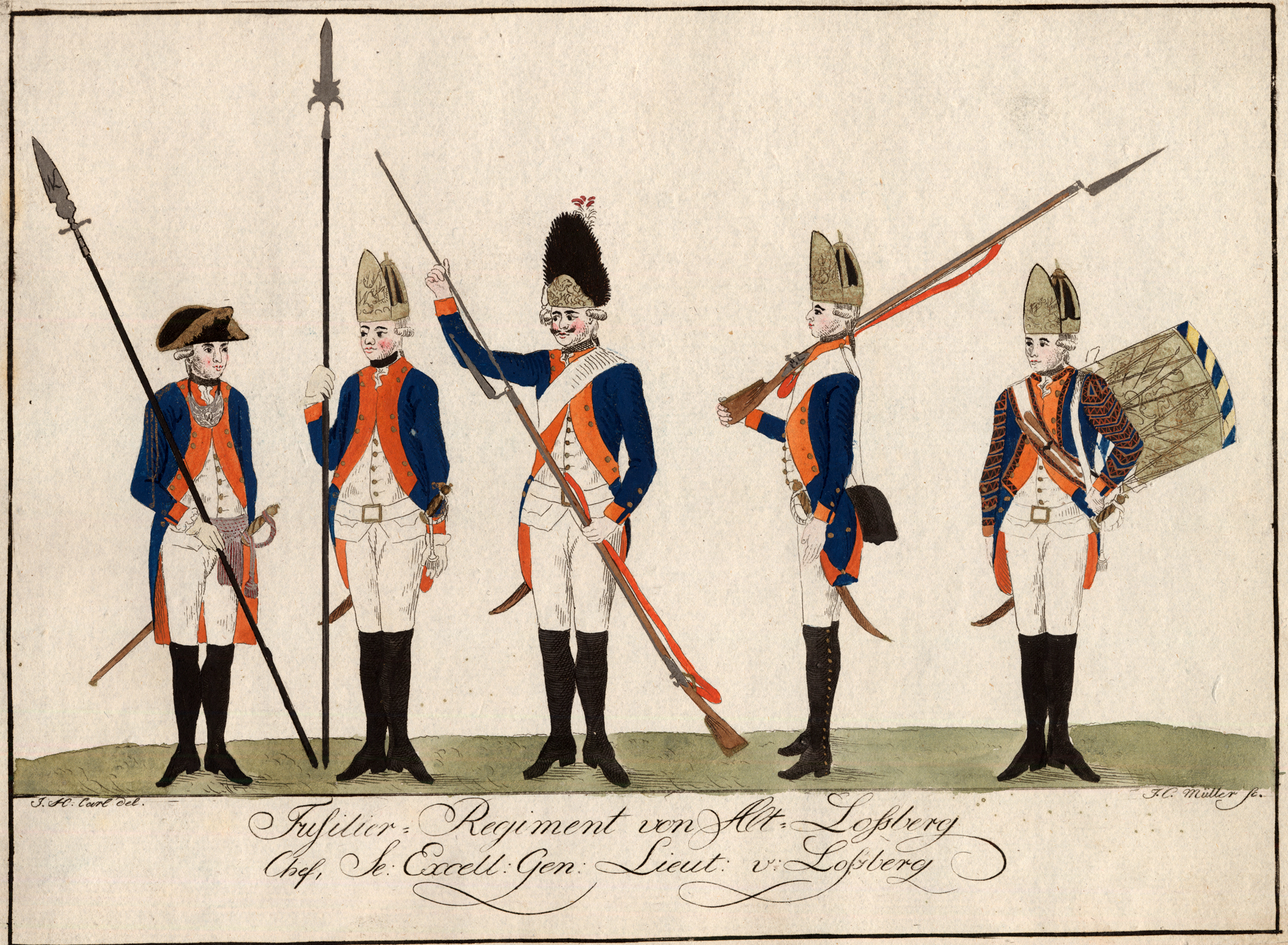 November 19th 1794 : Jay's Treaty is signed. This treaty negotiated by John Jay - the First Chief Justice of the Supreme Court - to finally put an end to several years of conflict between the United States and Britain. Though the Treaty of Paris in 1783 called for peace and the independence of America, several British forts outside of the American's land claims were cause for contention between the nations. While Britain was also at this time at War with France, the British navy was harassing American merchant vessels at sea and often impressing their crews into forced service. In Jay's Treaty, the British agreed to abandon the forts in the Ohio River Valley by June 1796. They opened up limited trade to the Americans in the West Indies and in India. They agreed to establishing commissions to deal with boundary issues with Canada, reparations for captured merchant vessels and remuneration for Loyalist losses. Many Americans, including Thomas Jefferson and James Madison, opposed Jay's Treaty as it made America allies with Britain in lieu of France (who had been an invaluable ally during the American Revolution).  November 20th-22nd 1777 : American forces at Fort Mercer, New Jersey, evacuate as the British fleet prepares to begin a naval bombardment. The Delaware River is now open to the British as far as Philadelphia. On the 20th, American Colonel Christopher Greene decided to abandon Fort Mercer in the wake of a British attack rather let the entire garrison be captured by the British. Philadelphia had fallen to the British on September 26th, and General Howe had been trying to take Fort Mercer and the rebuilt Fort Mifflin with their protective line of chevaux de frise obstacles across the Delaware River in order to receive supplies via the river. The initial move to take the forts began on Oct 22nd in the Battle of Red Bank. The forts' defenders would hold the British off until November 21st, when the first British troops entered the abandoned Fort Mercer. The Americans had blown up the fort's magazine the day before, leaving nothing to be scavenged by the British. While the forts fell and George Washington's plan to starve the British out of then capital city Philadelphia had failed, the fort defenders bought valuable time for Washington. As was requisite for the era, the harsh winter months approached and the armies activity slacked resulting in Howe being forced to leave Washington alone until spring. Washington and the Continental Army camped at Valley Forge, a mere 20 miles away (about a day's march).  November 21st 1775 : Paul Revere bears a letter from the Continental Congress to Oswald Eve, seeking help with building a new gunpowder mill in Massachusetts. Oswald Eve was the owner of the only gunpowder mill in the colonies at the time, and upon reading the contents of the letter asking for details about how to manufacture gunpowder and outfit a new mill, Eve decides that he isn't sure whether he want to help his competition. Paul Revere is allowed to tour the mill, though Eve avoids giving any information away about the manufacturing process. Already an accomplished gold and silver smith, as well as a metallurgist and chemist, Revere works out the methods being used during his tour of Eve's mill and is able to reproduce the process in the new gunpowder mill built in Canton, Massachusetts. This mill would produces tons of gunpowder needed by the Continental Army during the war. A intact gunpowder mill from 1816  November 22nd 1776 : In order to expedite enlistments for the new army on January 1st, Congress sent Washington a supply of blank commissions to issue at headquarters. November 23rd 1780 : Americans raid Coram (Smith Point), Long Island, New York . A force of 300 Continentals from Connecticut, commanded by Major Benjamin Tallmadge (who would later be known for his secret role in the Culper Spy Ring), captures the fort without encountering any resistance. He burns over 300 tons of hay and is later praised by Congress for this action. A miniature of Benjamin Tallmadge  November 24th 1778 : North Carolinians fend off the British in the Battle of Midway Church. As part of a British "Southern Strategy", General Augustine Prevost, commander of British forces in British East Florida organized the first British invasion of Georgia in November, with plans to attack Fort Morris, and earthen works fort at Sunbury, Georgia. As they were moving towards their target, Prevost's army units split up as they traversed the rebel hotbed surrounding Midway Church. On November 24th, Lt. Colonel Mark Prevost (the general's brother) was confronted by 100 soldiers under the command of Continental Army Colonel John White and Major James Jackson - though Prevost's 700 professional soldiers vastly outnumbered the untrained Continentals, the Americans formed a line at Midway Church. The other half of the British force, led by Lt. Colonel L. V. Fuser, had not been in contact with Lt. Col. Prevost for the duration of their march - fearing repercussions in a patriot-sympathetic territory, Prevost reconsidered his position and withdrew. Midway Church, rebuilt in 1792 after being burned by the British. 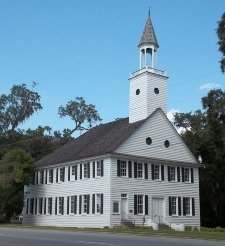 |
|
|
|
Post by Abraham on Jan 2, 2021 19:47:00 GMT -5
I think I'll revive this thread. We'll see if I have the time to keep it up. January 2, 1777 - The Battle of Assunpink Creek (AKA Second battle of Trenton) Following George Washington's dramatic victory at Trenton on Christmas 1776, it was inevitable that the British would move from their winter quarters to attack Washington's army. Washington decided to meet them in battle, on the outskirts of Trenton, on raised terrain behind Assunpink Creek. On January 2, a well-armed and provisioned column of about 8,000 redcoats and Hessians began the march from Princeton to Trenton, where Washington awaited. Throughout the day, the American rearguard, under Colonel Edward Hand (from Aurelia's home county - I believe? - of Lancaster, PA), kept up a harassing fire on the British flank, delaying their arrival in Trenton until dusk. Three British attempts were made to ford Assunpink Creek as night began to fall, but they were all repulsed with substantial British casualties (as Washington had all of his musketry and cannister shot focused on the creek's fording points). As night fell, Cornwallis decided to call off the attack and wait until the next morning to attack (against the advice of some of his subordinates), confident that Washington, with the Delaware at his back had nowhere to escape his overwhelming firepower. As he closed his council of war, Cornwallis declared with satisfaction, "Well, we've got the old fox trapped. We'll go over and bag him in the morning." Little did Cornwallis know that by morning, Washington would be in his rear, winning his third victory in 10 days - at Princeton. 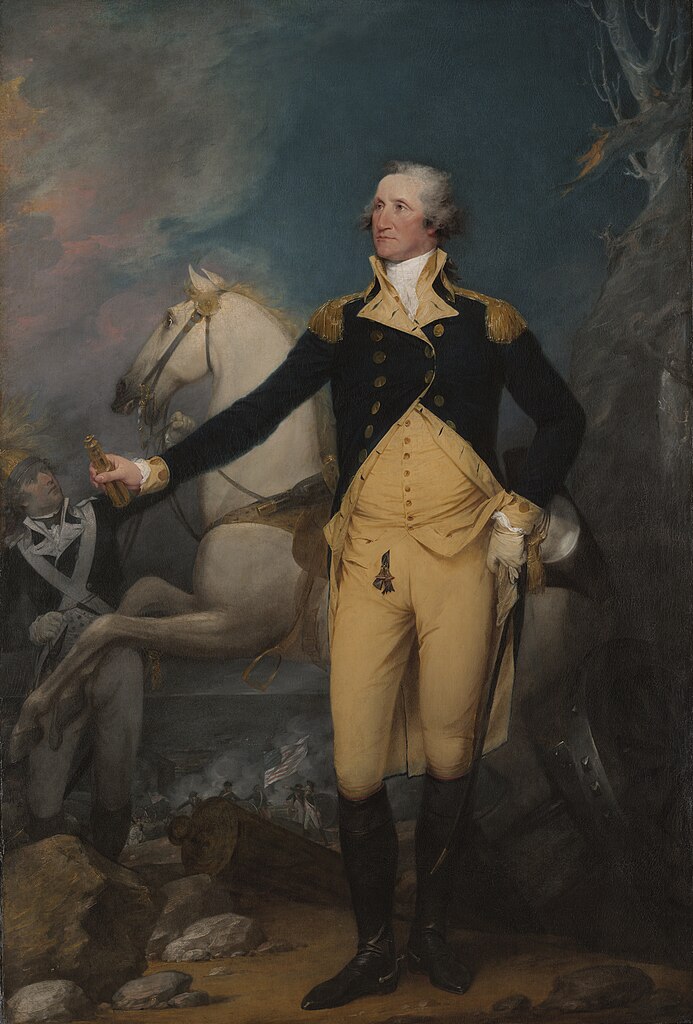 |
|
|
|
Post by Abraham on Jan 4, 2021 21:24:09 GMT -5
Lol. I already missed writing about the Battle of Princeton yesterday, but I did write a blog post about General Hugh Mercer, who was mortally wounded at the battle. @the Duchess might be interested to know that Mercer was a Presbyterian from Aberdeenshire who inexplicably joined Bonnie Prince Charlie's army as a medic and was present at Culloden. historycourses.com/hugh-mercer-the-jacobite-patriot/ |
|
|
|
Post by Aurelia on Jan 7, 2021 12:58:48 GMT -5
January 1-19th 1781: Raid on Richmond / The Richmond Campaign - which is to be one of Benedict Arnold's most successful military actions while serving in the the British Army - ends with British capturing and destroying the capitol of Virginia. 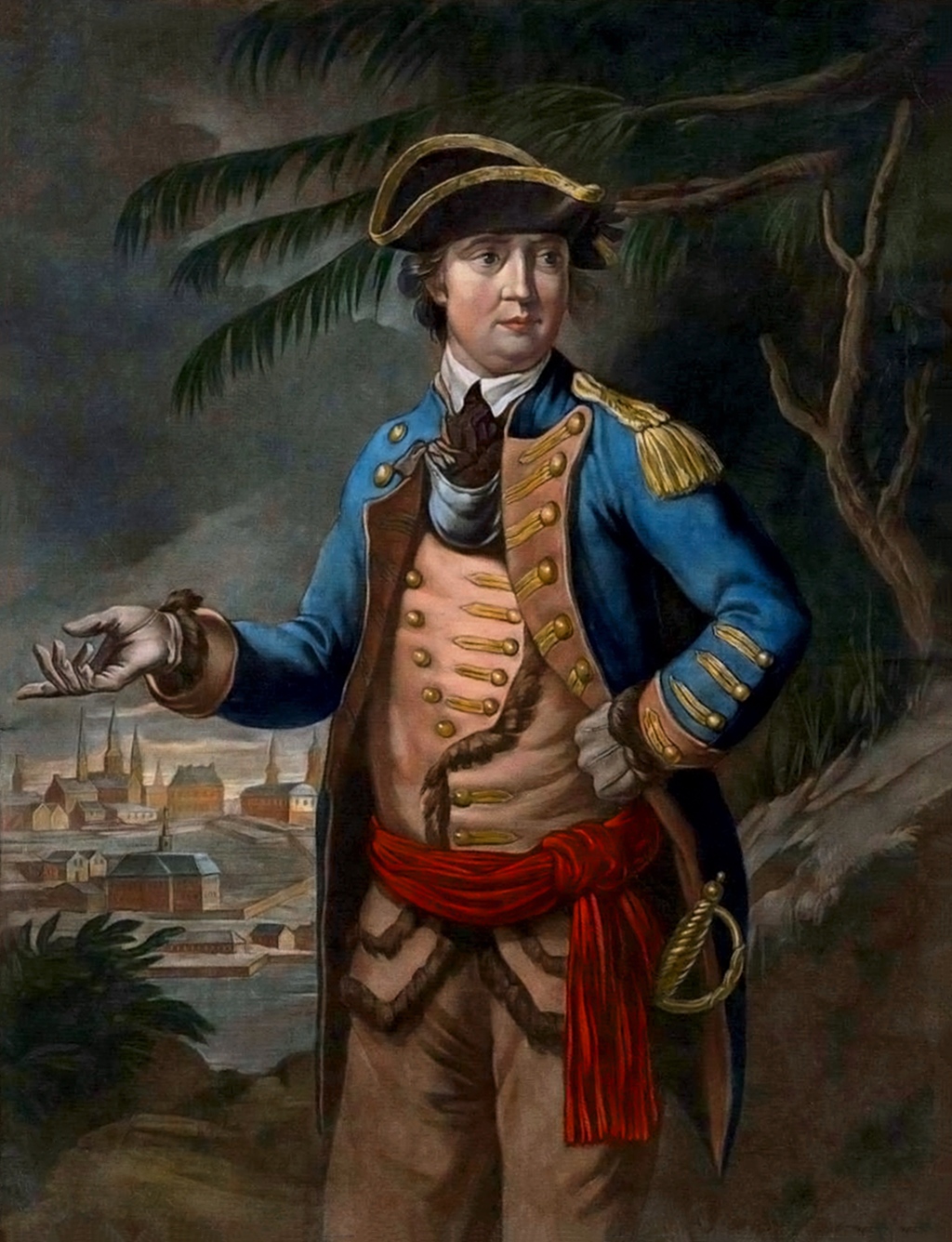 Portrait of Benedict Arnold by Thomas Hart, 1776 Portrait of Benedict Arnold by Thomas Hart, 1776
January 1-3rd : Arnold sails from Hampton Roads, up the James River with the ultimate goal of to seizing Richmond. On his way, he destroyed settlements and plantations that lined the river, looting and burning them. January 4th 1781 : Arnold and his Loyalist "Green Coats" / American Legion travel on foot to Richmond from their landing point at Westover Plantation. Besides his own American Loyalists, Arnold's forces included British regulars and Hessians, amounting to 1,600 men and consisting of infantry, dragoons, and artillery. Thomas Jefferson learned of Arnold's approach on the capital from General Washington, and after some delay called on the Virginia militia to defend it. Only 200 Virginians responded. Jefferson had moved the capital from Williamsburg to Richmond prior to the raid, as it was a more defensible and strategically central location - but it seems that most of the Virginians had already served in the Continental Army and thought that, with their terms over, they were no longer obligated to answer Jefferson's calls for action.  January 5th 1781 : John Graves Simcoe orders his Queen's Rangers to confronts Virginia militiamen guarding Richmond - after a single volley, the militiamen (who were, to be fair, grossly outnumbered) fled the field and were further routed into the woods by the chasing Rangers. Jefferson saw the last defense of Virginia had failed and called for the quick evacuation of all military supplies - he himself fled. Benedict Arnold enters Richmond "undisturbed by even a single shot" around noon, and finding the supplies and Governor removed, he pens a letter to Jefferson, offering to leave that day if Jefferson will have all the city's supplies and tobacco loaded onto his ships. 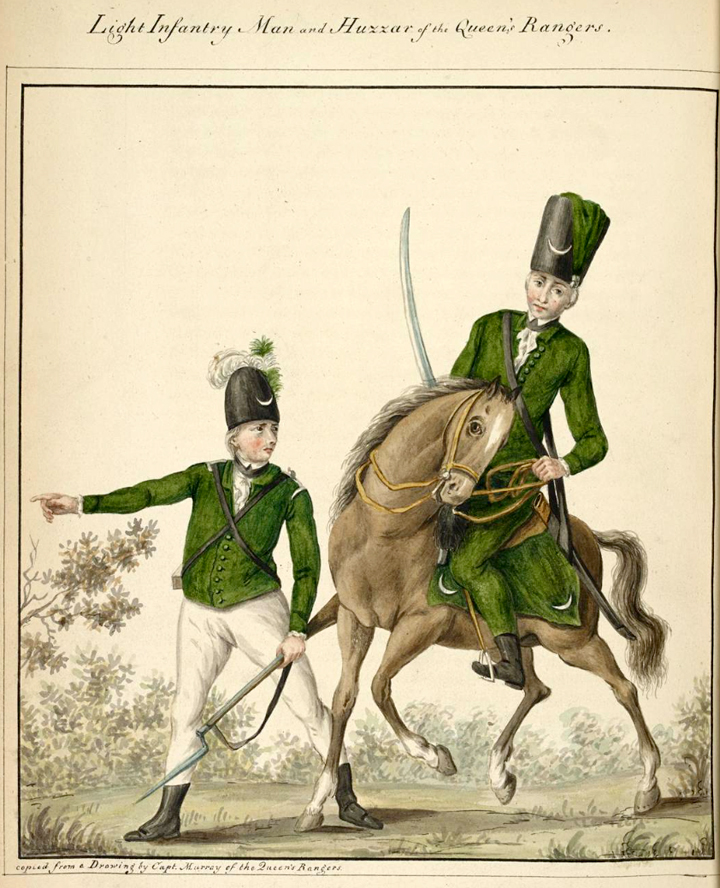 The Queens Ranger's Uniform The Queens Ranger's Uniform ( Windischer and I were just admiring their hats the other day). January 6th 1781 : Jefferson is in receipt of Arnold's letter. He replied that he refused to have dealing with a turncoat. Arnold then torched the town, destroyed records, plundered warehouses and looted ships in the harbor full of good from the West Indies. Arnold was only in Richmond for about 24 hours, and then continued destroying and seizing goods in the surrounding area. Perhaps the greatest loss to the Continentals was the destruction of the Westham cannon foundry and powder manufactory, just 6 miles up river. January 19th 1781 : Arnold works his way back down the James River to Portsmouth and prepares to winter there. "Jefferson set on Arnold's head a price of 5,000 guineas and riflemen practiced on a mark carved to resemble that head." |
|
|
|
Post by Windischer on Jan 7, 2021 13:25:12 GMT -5
 The Queens Ranger's Uniform The Queens Ranger's Uniform ( Windischer and I were just admiring their hats the other day). Indeed. I find green is always an interesting colour back in that period and the infantry hat reminds me a bit of what the Austrians wore back then. I wasn't however able to find any info on their halfmoon badge. Any idea what's the origin and meaning of that? |
|
|
|
Post by Aurelia on Jan 7, 2021 14:52:51 GMT -5
 The Queens Ranger's Uniform The Queens Ranger's Uniform ( Windischer and I were just admiring their hats the other day). Indeed. I find green is always an interesting colour back in that period and the infantry hat reminds me a bit of what the Austrians wore back then. I wasn't however able to find any info on their halfmoon badge. Any idea what's the origin and meaning of that? Seems like the cresent moon is used in reference to Artemis/Diana... I.e. the goddess of the hunt, with a silent predatory bird as her companion. It might seem like a stretch, but back then there was a fixation on ancient Greco-Roman ideas, myths, symbolism, etc, so this would have been a much more viable option to pick off the top of their head than it is for us. The Queen's Rangers, with this symbol of intelligence and predatory acumen seems like a good fit. I may not have mentioned it, but they were basically like the 'special ops' of the British... they could live off the land and were schooled in all manner of guerilla / recon / "Dirty Tricks" type skills. They were basically schooled in badassery... 😄 Though these uniforms were only brought into use after 1780... |
|
|
|
Post by andrew on Jan 7, 2021 15:47:17 GMT -5
The crescent was a nod to the Hungarian origins of the Hussar, many of whom were Muslim. (Actually, I like the Goddess of the Hunt interpretation better - the hunting horn became the almost universal symbol of light infantry everywhere). EDIT: I am wrong, so very wrong....  |
|
























